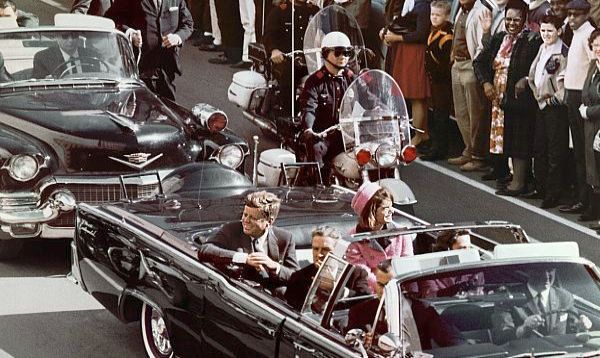Last month, on the 50th anniversary of the assassination of US President John Fitzgerald Kennedy, I had the unusual opportunity to meet and spend a good part of the day with Jeremy Gunn, Executive Director of the 1994-98 Assassination Reference Review Board.
If you’ve seen Oliver Stone’s movie "JFK," you may remember that in the very last scene it refers to tens of thousands of government records that are in the US National Archives and in government agencies that have not been released to the public. United States Congressman from Ohio Louis Stokes watched the movie with his daughter. After the film his daughter asked, "Daddy, why don’t you do something about that?"
Stokes acted on his daughter’s challenge. He was pivotal in enacting the law that established the Assassination Reference Review Board in 1992, a few months after the film’s release in December 1991. The board was tasked with tracking down every government agency document referring to the Kennedy assassination and making it available to the public — including documents held by the CIA, the FBI, and the NSA. The review board had considerable powers to declassify documents.
Documents that remained classified will be available to the public in 2017.
By coincidence Dr. Gunn and I were both presenting talks at the University of New England in Portland, Maine organized by Dr. Anouar Majid, UNE’s Vice President for Global Affairs, and Director of the Center for Global Humanities. My title of my lunch-time talk was "Who was Quetzalcóatl?"
I got to speak of Mesoamerican mythology and the intrigue in the council of gods as they determined how to create the fifth sun and its accompanying fifth humanity of which we are part. I also spoke about Toltec Emperor Ce-Ácatl Topiltzin Quetzalcóatl who departed from Tula in 999 A.D. — promising to return someday — a beloved leader who exited at the age of 52, not much older than Kennedy.
 |
| Lee Harvey Oswald |
In his evening talk, Dr. Gunn walked us through how the Assassination Reference Review Board had done its work. He talked about the numerous witnesses they deposed, some for the first time, and the reams of documents they scoured. Many of their findings contradicted the Warren Report, the report generated by The President’s Commission on the Assassination of President Kennedy set up by President Johnson just days after the assassination.
Dr. Gunn told us the Warren Commission report "did a disservice to the American people." He compared the report to a "prosecutor’s brief against Lee Harvey Oswald." He said that based on the Warren Report, Oswald could not have been found guilty beyond reasonable doubt.
Dr. Gunn added that through its gaps and contradictions, the Warren Report "gave life to conspiracy theories" — of which he named several. I found it interesting that prominent among them were the ones set in Mexico City during the period of Cold War intrigue in the early 1960s.
According to Dr. Gunn, at that time Mexico City was the "spy capital of the world." "Americans, Europeans, Soviet, Chinese, and Czechs were all spying on each other."
He said the CIA had the Soviet and Cuban embassies under intense surveillance, recording the calls on most of the phone lines going into both embassies and photographing every person entering and leaving those embassy buildings. In theory at least, every person entering the Soviet or Cuban embassy was photographed from the back upon entering and in front view upon exiting.
That’s why Dr. Gunn considered it strange that there were no photos of Lee Harvey Oswald at those embassies. Eight weeks before the Kennedy assassination Oswald had traveled to Mexico City. Oswald entered the Cuban and Soviet embassies here seven times. In theory the CIA should have 14 photos of Oswald. However the CIA produced no photos of him to show to the Assassination Reference Review Board. The photo surveillance system seems to not have been operational at either embassy while Oswald was in Mexico City.
Yet it is known that Oswald met with Valery Kostiakov in the Soviet Embassy in Mexico City seven weeks before the assassination of President Kennedy. Kostiakov was attached to the infamous "Department 13" of the KGB’s First Chief Directorate, specializing in sabotage and assassination.
During that trip Oswald was photographed at a party in Mexico City with Cuban diplomats. Cuban diplomats had close relationships with members of Mexico’s Communist Party, some of whom also attended the same party. They were later horrified to discover they had been at a party with Kennedy’s accused assassin.
At my talk on Quetzalcóatl I was asked if there was any more to the story of the historic character Ce-Ácatl Topiltzin Quetzalcóatl. One story has it that he set off from Veracruz on a raft in 999 A.D. sailing east — becoming the planet Venus when he touched the horizon. When Hernán Cortés landed on the same shores in 1519 many thought that Ce-Ácatl had returned. Using that to his advantage, along with alliances made with the Aztecs’ enemies, Cortés must have generated spying and intrigue that was not equaled until the 1960s, in what is now Mexico City.
Original Story


